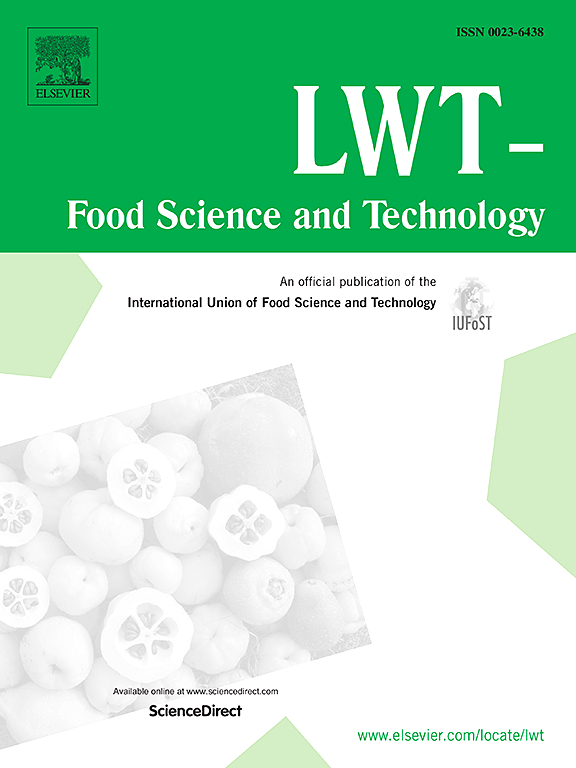Bacterial assessment, thermal resilience and antibiotic resistance profiles of bacterial contaminants in retail fish and meat
IF 6
1区 农林科学
Q1 FOOD SCIENCE & TECHNOLOGY
引用次数: 0
Abstract
This research investigated bacterial contamination in various type of meat and working personnel samples from Nushki, Balochistan, Pakistan. Out of 150 samples comprising of beef, fish, mutton, equipment and working personnel, 40 (26.66%) detected positive for bacterial pathogens. The bacterial species including Bacillus cereus, Campylobacter jejuni, Escherichia coli, Lactobacillus divergens, Pseudomonas aeruginosa, Pseudomonas alcaligenes, Salmonella enteritidis, Shigella dysenteriae and Stenotrophomonas maltophillia were identified from the samples. Beef samples showed the significantly higher (p < 0.05) bacterial prevalence than fish and mutton. Meat from Masjid Road and Eidgah Road exhibited elevated contamination, whereas, equipment had the lowest rates. Beef samples from meat market contained the highest bacterial load (1.65 × 103 log 10 CFU/ml). Cooking temperatures ranged 37–45 °C for 10–60 min did not affect the bacterial growth significantly (p > 0.05). However, Salmonella enteritidis, Lactobacillus divergens and Bacillus cereus were able to survive when exposed to 100 °C for 10 min. The antibiogram investigation revealed that the isolated bacterial species were sensitive to colistin and cefixime, yet resistant to amoxicillin, neomycin and piperacillin. The results highlight the significant issues with bacterial contamination across different types of meat and indicate antibiotic resistance in the isolated species.
求助全文
约1分钟内获得全文
求助全文
来源期刊

LWT - Food Science and Technology
工程技术-食品科技
CiteScore
11.80
自引率
6.70%
发文量
1724
审稿时长
65 days
期刊介绍:
LWT - Food Science and Technology is an international journal that publishes innovative papers in the fields of food chemistry, biochemistry, microbiology, technology and nutrition. The work described should be innovative either in the approach or in the methods used. The significance of the results either for the science community or for the food industry must also be specified. Contributions written in English are welcomed in the form of review articles, short reviews, research papers, and research notes. Papers featuring animal trials and cell cultures are outside the scope of the journal and will not be considered for publication.
 求助内容:
求助内容: 应助结果提醒方式:
应助结果提醒方式:


